SteriPEN Ultra Review (with Lab Test Results) South America
Traveling and want to avoid diarrhea? Of course you do. The first thing to do is find safe water. In this post, you’ll learn about a lab test I ran to see how well Steripen sterilizes dirty water. Lets do this!
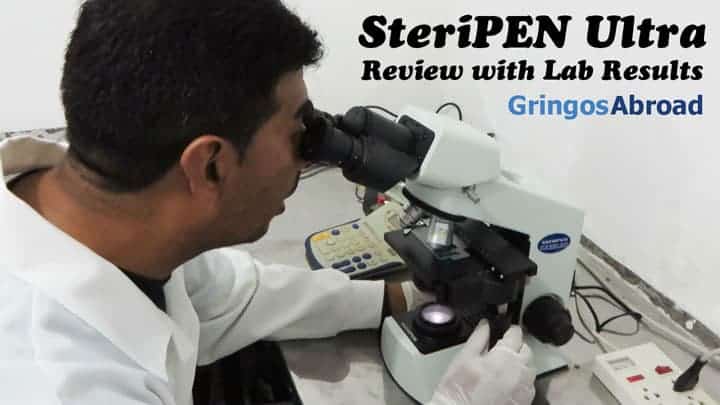
SteriPEN Ultra Review (with Lab Test Results)
Travelers Rule #1: Don’t drink the water!
Everyone knows about travelers’ diarrhea. It is one of the most common and most embarrassing travel-related illnesses. Between 30% to 70% of travelers are affected, depending on the destination and season.
Bad water can cause even more serious problems than a couple of days of diarrhea. Certain amoebas and parasites can only be treated with very strong medication.
But what are you supposed to do? Bottled water is okay as long as it’s available. But what if there are no stores nearby? And buying water can get expensive.
Before we moved to Ecuador, we looked into water filtration and sterilization methods. At home, we use a counter-top water filter. Read our review.
Does SteriPen Actually Make Water Safe?
After writing about boiling drinking water and how to stay safe, SteriPEN contacted us and asked us to test and review one of their UV sterilizing units for travelers.
The model they sent us to test was the SteriPEN Ultra (with USB charging).
We had two options to test the UV light:
- Use the pen, drink the water, and see if we get sick
- Test the results in a lab
While option #1 sounds tempting, we decided on option #2. Here’s what we did.
How We Tested the SteriPEN Ultra
To find out if it really worked, we took water samples from two unlikely places (both in Cuenca, Ecuador):
- a public washroom in a busy shopping center
- the Tomebamba River (one of the four rivers that run through the city)
We then tested them in a lab. Here’s what we found.
- The tap water passed the test without treatment. While it did have some bacteria, it was safe to drink. This is impressive, given that we took the sample from a public washroom. As you will see in the video below, I did let the water run for a few seconds first and we used a sterilized container.
- The river water, of course, was full of life – and dangerous to consume. In addition to a lot of rotting organic material we found bacteria, amoebas, amoeba eggs, and parasite eggs.
Here are photos of some of the wildlife from the river water:
Once we established that the river water was unsafe, we then we treated the same water with the SteriPEN Ultra and retested the water.
Did The SteriPEN Work? Our SteriPEN Review
Yes. All the life, including amoebas, parasites and bacteria were killed by the SteriPEN and it was safe to drink. It was even safer than the treated/filtered tap water in the same city because everything was dead – including the bacteria.
I should mention that I didn’t stir the unit properly in the test. I was supposed to keep it in motion during the test to ensure uniform purification – but I forgot. In spite of that, it still eliminated all of the living contaminants in the water.
See the end of the post for more tips on proper use.
Here are two image of the same amoeba:

AFTER: This is the same type of amoeba, now dead from the UV light treatment of the SteriPEN Ultra.I was really impressed by this test. Seeing the same organism alive and then dead from the UV light convinced me.
We are going to use the SteriPEN on all questionable water from now on.
SteriPEN Ultra Review with Lab Results
Curious about what comes in the box? Here’s what to expect:
Steripen Unboxing Video
SteriPEN Ultra Features
Here are some of the key features of the model we tested:
- Works in 48 seconds (500 ml) or 90 seconds (1 liter)
- Treats up to 8,000 liters (over 7 years of safe drinking water for one person)
- Destroys 99.9999% of bacteria, 99.99% of viruses, 99.9% of protozoa
- USB rechargeable from a computer, wall socket or solar panel
It is quite fool-proof: The Ultra model displays a smiley face when you have successfully treated the water and it won’t turn on unless it is properly submerged in the water.
9 Tips for Safely Using the SteriPEN
Here are a few things to keep in mind as you get started with the SteriPEN:
- The unit should be moved in a stirring motion during water treatment. This agitation helps ensure consistent purification.
- SteriPEN is meant for use in clear water. It can be used to treat turbid or cloudy water in an emergency. It is always best to physically filter the water to remove as much dirt and silt as possible. This material will affect the effectiveness of the UV light. SteriPEN recommends doubling the treatment time on cloudy water.
- The UV lamp emits both visible and UV light. If the lamp isn’t emitting visible light it needs to be repaired or replaced.
- The UV light will not treat water droplets on the mouth of the water bottle. Always be sure that the mouth of your bottle is clean and dry before drinking purified water.
- Because glass, plastic, ceramic and metal all absorb or reflect UV light, you are not at risk for UV exposure.
- Do not use in water above 120°F / 49°C
- A fully charged SteriPEN can treat approximately 50 liters of water. Always charge your unit before heading out.
- The OLED screen will indicate when the bulb is nearing it’s end – displaying when it has less than 100 treatments left.
- The unit has two water-sensing pins. They must be submerged in the water in order for the light to turn on.
3 More Reasons to Use SteriPEN
SteriPEN not only keeps you healthy. There are other key benefits.
Save Money: Let’s do a little math. One SteriPEN will purify 8000 liters of water. That means you won’t buy 16,000 bottles of water. Even here in Ecuador where water is cheap ($0.30/500ml bottle) this would save you $4800 for the life of the purifier. Water can cost between $0.03 and $3.00 for a 500ml bottle. At less than $100, the SteriPEN makes good economic sense.
- Save Time: Water isn’t always available. Who wants to spend time your travel time looking for a bottle of water? Just take some tap water, treat it and enjoy your travels.
- Save the Environment: Beside the costs of buying water, there is also the environmental impact of thousands of bottles of water. By purifying 8,000 liters of water (the life of a SteriPEN) you are keeping 16,000 bottles out of the landfills.

Note: While we were given a free unit to test and review we didn’t receive payment for this review. The thoughts and opinions are our own. The links to SteriPEN in this post are affiliate links. If you purchase this product we will make a small commission. You will pay the same either way.
Contest: How will you use your Steripen? (Contest closed)
Tell us how (or where) you will use the Steripen Ultra and you might win it! Have a trip planned? Where are you going? Why do you need water sterilization? How will you use your SteriPEN Ultra? Tell us all about it in the comment section below and our favorite comment will receive the SteriPEN Ultra (the same model we tested and reviewed in this post) direct from SteriPEN. Contest closes September 6th, 2014 at 12 noon (GMT-5, Ecuador time). The winner will be contacted directly and published here on this post. Contest is sponsored by SteriPEN.
(Update, September 9, 2014) The contest has closed and the winner has been chosen. Congrats to Leire Pacheco who is heading out on a round-the-world trip in two months. The SteriPEN is going to come in handy! Read Leire’s comment.
Water Safety in Cuenca
After publishing about our water filter two years ago, we learned that water quality is a hot topic among expats. There are almost one hundred comments on that post – showing how important this is for everyone.
For the test, we took water samples from two locations:
- tap water from a public washroom
- the Tomebamba River
I know, what were we thinking? Well, two things. First, we wanted to avoid taking water from a building that had a secondary filter. We wanted to get true Cuenca water – so we took it from a non-residential area. And secondly, we wanted some really dirty water to see how well the SteriPEN actually worked. The river water worked well for this.
Cuenca Water Lab Results
What were the results?
- Cuenca’s tap water: PASSED, even though it came from a public washroom. There were some bacteria, but it was free of amoeba and parasites. The lab technician said that it was safe to consume.
- Cuenca’s river water: FAILED. Not surprising, the river water was a dangerous mix of parasite eggs, amoebas, and bacteria. The technician said it looked like a zoo of microscopic activity.
Here are some of the critters we saw in the water:
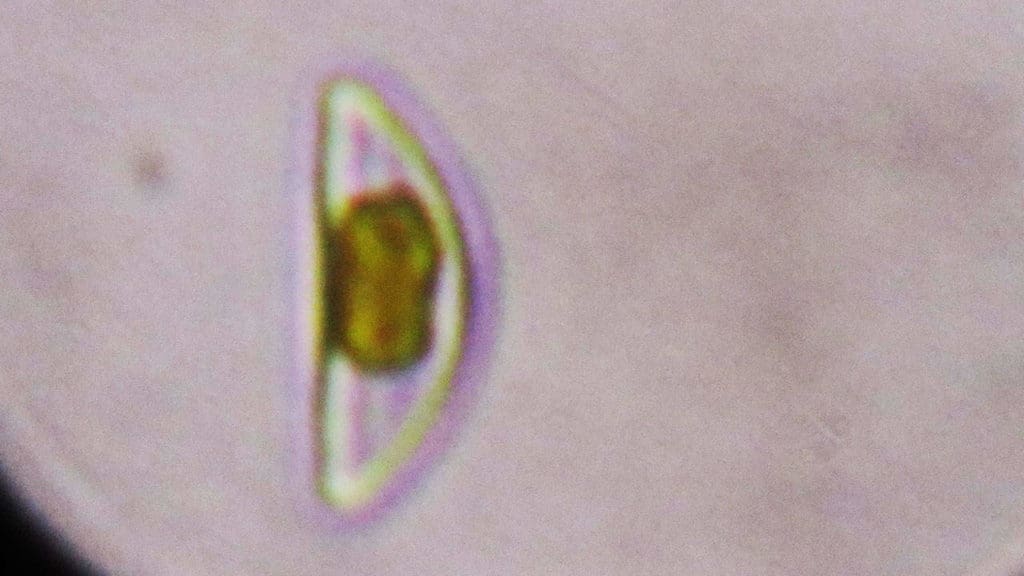
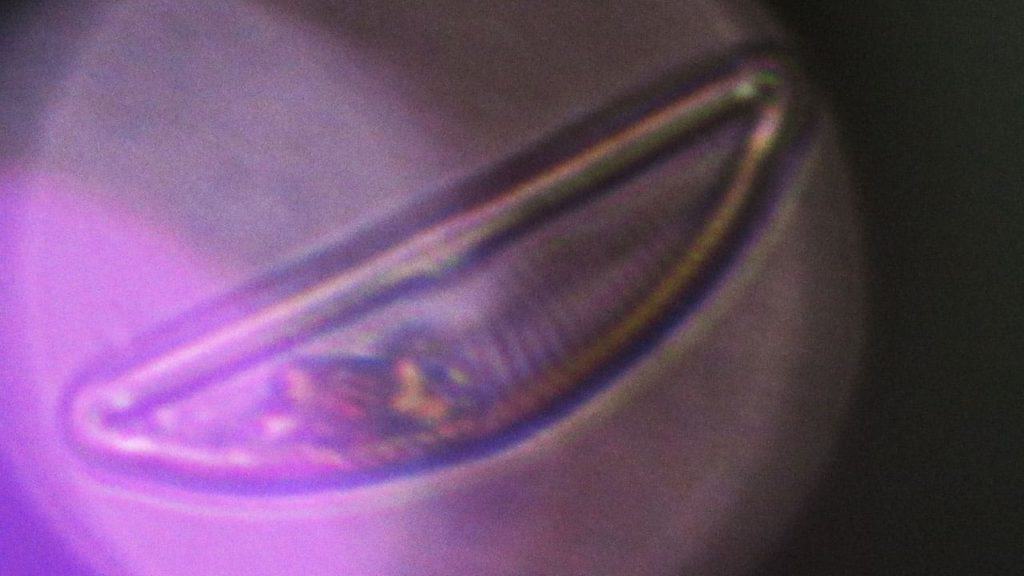
pH Levels of Cuenca’s Water
In addition to contaminant tests, we also tested pH levels of both types of water. Cuenca’s tap water had a pH of 7 (neither alkaline nor acidic) and the river water had a pH of 8 (moderately alkaline).
The SteriPEN treatment didn’t change the pH level. A pH level of 7 is considered perfect for drinking water.
SteriPEN Sterilization Results
We initially planned to use the SteriPEN to sterilize both water samples but because the tap water came back safe, we didn’t bother.
We did treat the river water and then we re-tested. This was very interesting.
During the initial test, we saw live amoebas and parasite eggs. After sterilizing the water with the UV light, they were all dead. We saw the same organisms but they had been killed by the light.
Note: the UV light in the SteriPEN will kill living organisms in the water, but it doesn’t filter the water. Although the dead organisms remain in the water, they won’t do any harm.
So, the SteriPEN was able to take dangerous water and make it safe to consume.
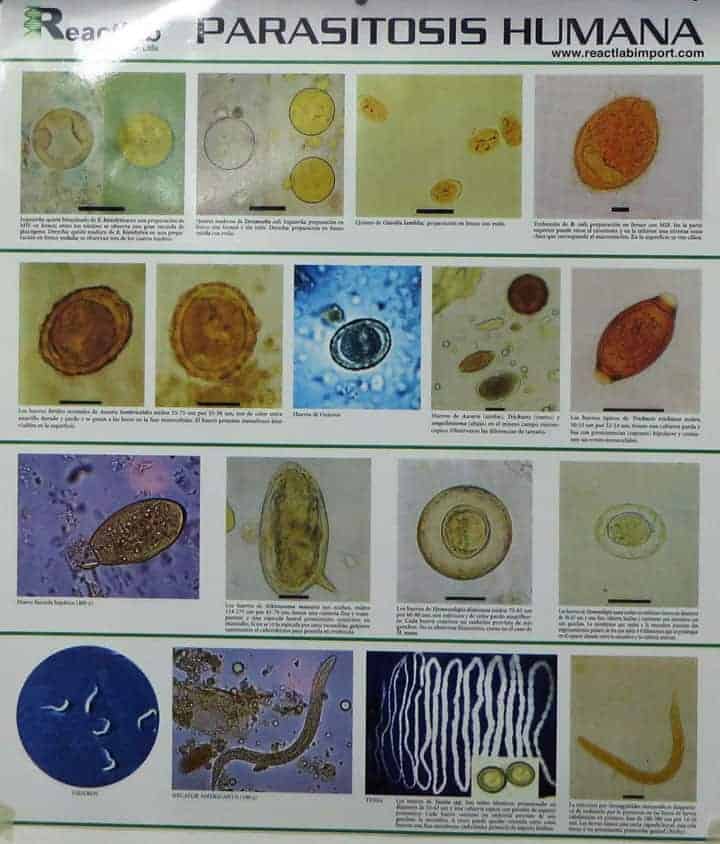
Does This Mean All Ecuador Water is Safe?
Can you drink all the water in Ecuador? Of course not. The technician noted that he has tested the water in some small towns just outside of Cuenca and they are unsafe and will cause sickness. He told me that he uses a water filter system in his home.
While we will continue to occasionally drink the water in Cuenca, we prefer to filter all of our water at home. We use a counter-top ceramic filter for an extra level of security to keep us healthy. When we lived in Canada, we drank our well water – but only after running it through a ceramic and sediment filter. It is inexpensive and worth the trouble to stay healthy.
Other expats in Cuenca don’t filter the water and don’t have have trouble with sickness. It really is a preference / confidence issue.
When would you use a SteriPEN? It is ideal if you are either living outside of Cuenca and/or planning to travel around the country or more of South America.
Now, it’s your turn
Have you used a SteriPEN? How do you stay healthy abroad? Please share your thoughts and tips below…

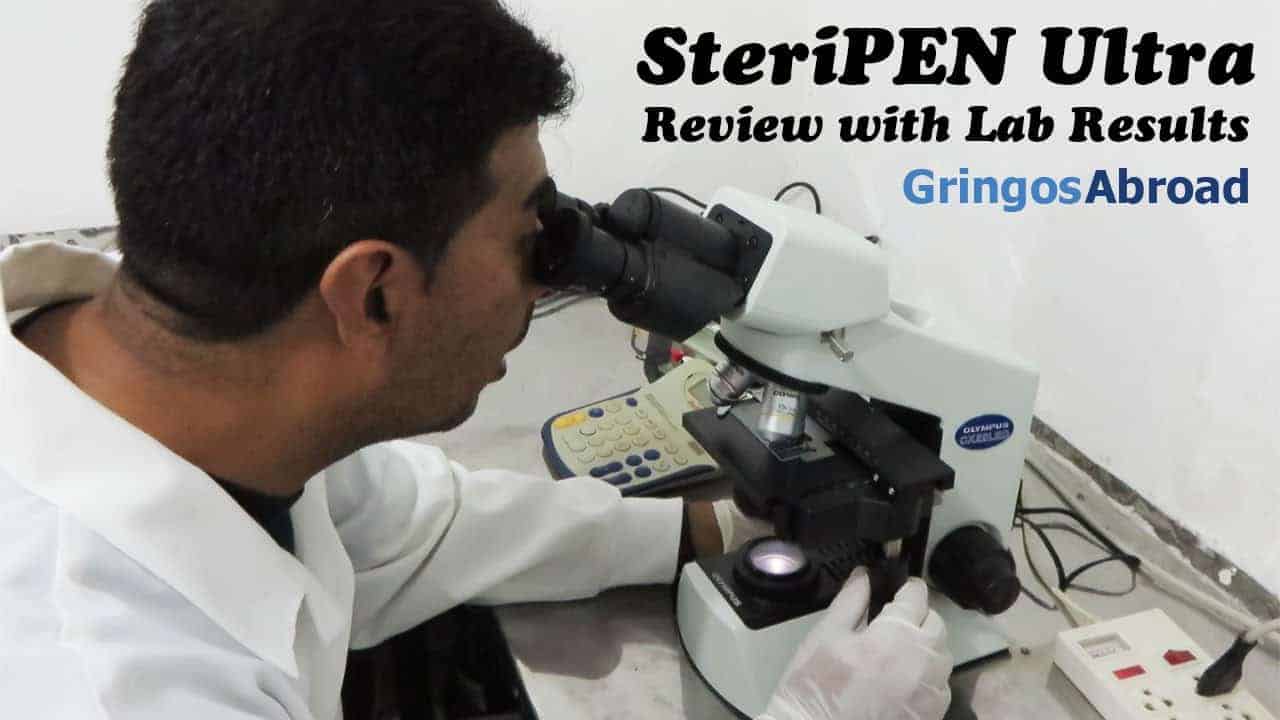



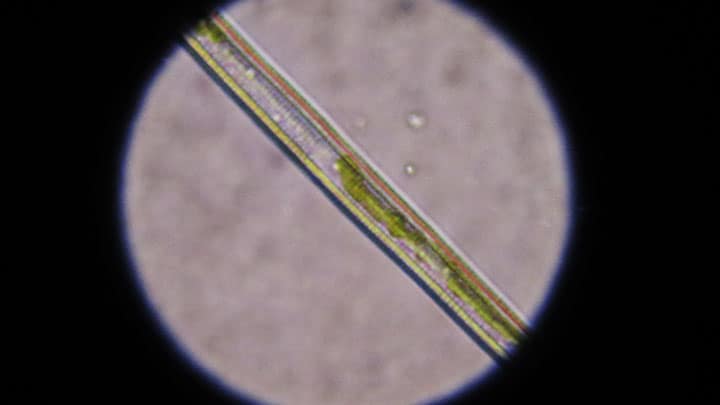

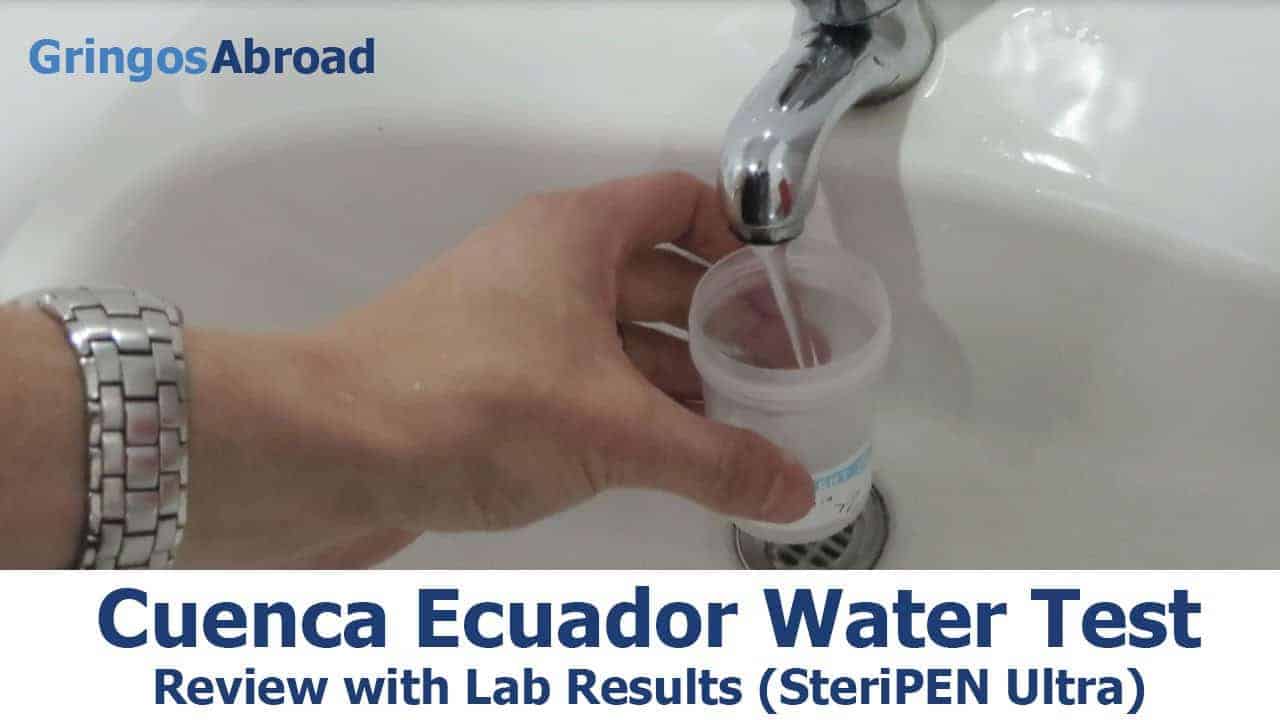
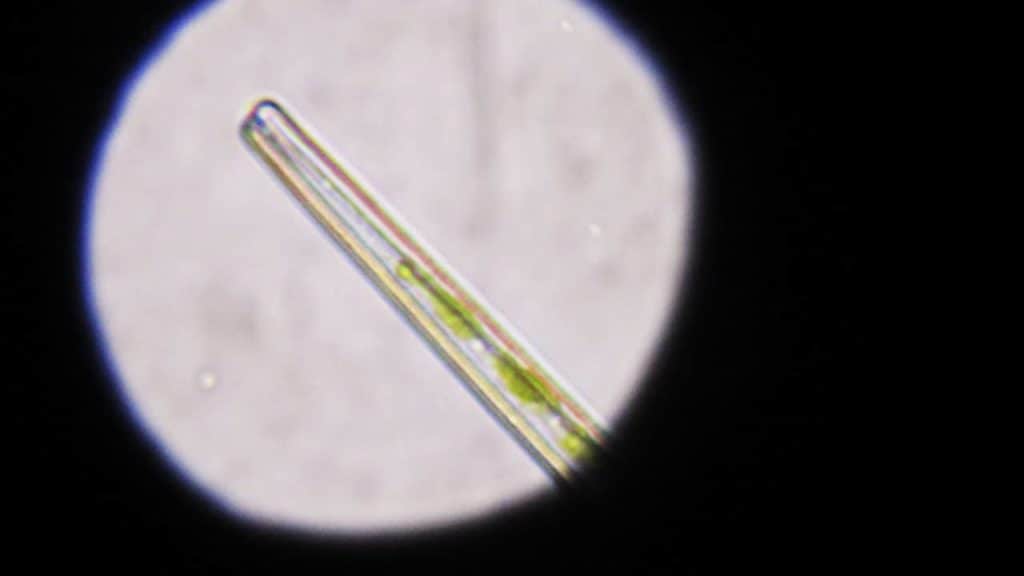
![How to Choose the Best Camera for Safari [Buyers Guide]](https://storyteller.travel/wp-content/uploads/2018/03/best-camera-for-safari-768x548.jpg)
![Complete African Safari Packing List [Checklist and Guide]](https://storyteller.travel/wp-content/uploads/2018/03/safari-packing-list-768x576.jpg)



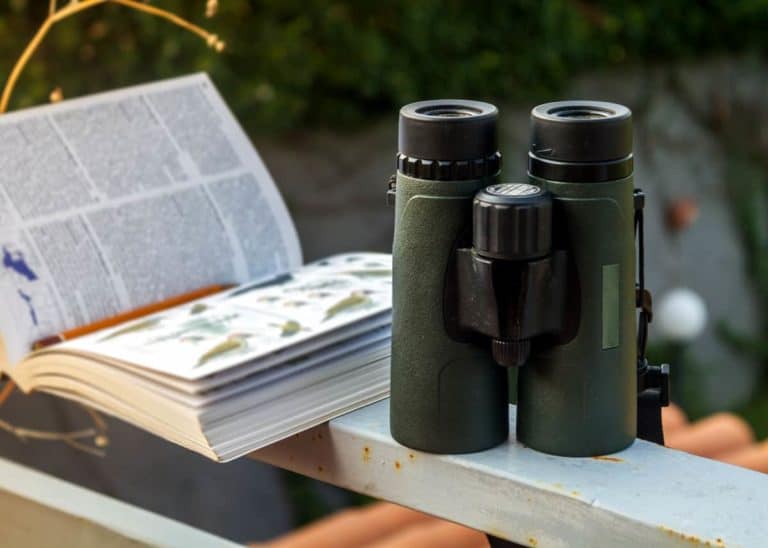
This is now a long time after this interesting experiment was done, but it remains a commonly-used purification system. I am interested in using it myself, but one thing bothers me, and that is the area above the unit that is not sterilized. You were obviously aware of that, as you wrote: “The UV light will not treat water droplets on the mouth of the water bottle. Always be sure that the mouth of your bottle is clean and dry before drinking purified water.”
I cannot imagine that simply drying the contaminated area would be of much use to prevent re-contamination. When the technicians sampled the sterilized water in your test, did they pour it out past this contaminated area, or bypass it with a sampling pipette?
It seems to me that this contamination issue with this system is a negative….what are your thoughts?
Thanks for reviewing the Steripen.
While I find your inquisitiveness and curiosity about the functioning of this device to be admirable, I don’t think your experiment was very scientific. For one, the majority of the organisms of which you have posted images are diatoms and other types of phytoplankton, not pathogens. The “After” image is definitely a diatom, while the “Before” image is difficult to identify, due to image quality. There was definitely an amoeba swimming around in the video that you posted. But I don’t see any evidence of dead amoebas.
While I have no doubt that the Steripen is capable of rendering most pathogens uninfective, the type of test that you conducted is not a good way of determining this. A true measure of the effectiveness of this device would require a study that can determine if organisms are capable of reproduction post treatment. Simply looking in a microscope to see if organisms are moving around after being zapped by UV light doesn’t really tell you anything. A lot of pathogens, such as Cryptosporidium parvum oocysts, and viruses, won’t be seen to be swimming around under a microscope, even when they are alive. But that doesn’t mean that they can’t cause an infection!
I think there is a lot of evidence that the Steripen is a trustworthy device. But I think there are better sources of evidence out there.
While I find your condescending comment entertaining, I don’t think your response was very well researched. The effect of UV light on microorganisms is well documented. While I was there for the test, a trained lab technician oversaw it. He observed the life before and the absence of life afterward. That was the purpose of the test and it passed. You are correct, the image quality isn’t that good. That is my fault – I was trying to take a photo through the microscope with a point and shoot camera. But my bad photos don’t negate the technicians findings.
If you doubt these results – or that the Steripen works at all – I invite you to run your own test, hire a lab and share your results here.
Thanks for the information. I am moving to Cuenca November 1st and while everything I’ve read indicates that the Cuenca water is good to drink, a little insurance can’t help. I’ve ordered the SteriPen and will make good use of it. For the areas outside of Cuenca, I can only hope it works as well as yours did for the test. Thanks for the info.
How many SteriPens do I need?
One, two, maybe three
One for Public water I don’t trust
And for Grandkids camping it’s a must
While traveling home and far away
Keeps me safe the whole day
Kept in car and purse as well
When it’s needed, you never can tell
Keeping us informed in all that matters
Thanks Bryan and Dena for all your data
🙂
Dear Bryan,
I plan on going to several locations, probably in smaller towns, in Ecuador next October. My dream is to retire in Ecuador as soon as I can make it happen! For me, I would be most grateful that the SteriPEN would provide me with something you cannot buy: the feeling of safety. At home in the US, I make sure that even the water I cook with is clean water! With a SteriPen by my side, my Ecuadorian experience will be one with easily accessible clean water! And that, my friends, is Priceless!
Always appreciative,
Veronica
This is really the use of the SteriPEN – it ensures peace of mind, when you can’t be sure of the source (or quality) of the water.
All the best on your travel plans!
I have used my steri pen in most of my multi day float trips in the Ozark Plateau. The pen allows me the flexibility of not weighing down my solo canoe with gallons (pounds) of water for drinking and cooking. By going ultra light I can take more sporty lines and rivers/creeks where a heavy boat would swamp in the waves.
This is a good point. By sterilizing water on the go, there is significantly less weight to haul.
The October long weekend is the Coast and Mountain Walkers 80th Anniversary. Five parties are converging from different directions to camp in one location on the upper Kowmung. It will be an awesome three days in pristine back country. It is wild, remote and beautiful! SteriPEN safety is essential. Blue Mountains Sydney Australia. Gods country!
We came to Cuenca and were thrilled with the water, but there were times on our two weeks there when we’d run out of bottles filled at our apartment from the tap, Having guaranteed clean water would have been really appreciated when our tongues were sticking to the roofs of our mouths and there were no water fountains in sight (actually happened as we were walking along the Tomebamba on our way from the Banco de Central museum’s aviary). Watching all that water flow by, but knowing that people wash their clothes in it, only increased the parched feelings we were experiencing. When we move there next year, this pen with be the first purchase on my list for our excursions (well, this pen and long handled scoop – the river was moving too fast for any of us to wade into it to catch a cup!)
This is the year of my 75th birthday. I am about to embark on a life changing journey from the United States, through Mexico, Central America and onward to reside in Ecuador. I will be driving my big old 91 Ford van nicknamed, Red Bear. I will be blogging and telling the stories of real people, especially children and young parents as I go along the way. I believe that person to person interaction is the single best way to heal ourselves of all the madness, out of control violence, to heal the nations of the heart, the one heart that resides within humanity. I seek your support and solicit your stories: how we may be together win the peace we all seek to live. Love and Blessings and thanks for the opportunity, Amraah, (everybody’s favorite grandmother.)
While we live in Cuenca, and know that the water is safe to drink, we often travel to visit families in “el campo”. Many of the families we visit don’t have much to offer, but a glass of water. However, we usually have to decline, even if the hot Andes sun has overheated us. It would be so nice to be able to accept a glass of water and just explain that we have to kill the bacteria that will make us sick, as extranjeros. Then, go on with the conversation. I think that the steri-pen would come in super handy when we travel to other parts of Ecuador and even the world, especially in airports, where a tiny bottle of water can cost $3-5 dollars! It would also save a lot of BPA exposure from plastic water bottles. What a cool idea!
Previously I had heard good things about the Steri-Pen because I’m a caver and it was reviewed in one of the caving publications I receive. Your review makes me all the more interested in having one to use on caving/camping trips. We will be coming back to Ecuador in November for two weeks and it would be great to have one to use during that time. Keep up the good work.
Bryan,
My wife and I have been following you and your family and learning from your experiences, We are working on our Spanish and plan a 3 month visit sometime in the next couple years. The future plan would be to move to baños de agua santa if all works out!
Thanks for what you do,
Jack and Sue
Thanks so much for the info on the SteriPen. I’d heard of it but didn’t know how it worked. I also thank you for the post about how to find real estate to be your most helpful post to date!!! It’s true, we consider a country and finding rentals and/or properties for sale is one of the first things one looks at. The prices are all “gringo” prices (expats taking advantage of the market and then gouging would be expats!)
We are leaning heavily towards Ecuador (maybe Loja), but want to slow travel several locations before settling down including Europe and Asia. The SteriPen would be a life saver. I don’t like to waste money or add to the garbage waste with bottled water either!
Hey, Bryan !
I’ve written before but I don’t know if you ever received my comments. The first thing I have to say is that your style and content have shown dramatic improvement over the last 12-15 months. Also, as you can probably tell by my name, I am, by heritage at least, (my Father) a fellow Nova Scotian.
All that being said, I found your review of the SteriPEN very informative and an absolute perfect substitute to bottled water. When combined with a Britta, the danger of contaminated water is pretty much eliminated. I recently read that it took 900 million barrels of oil to produce the plastic for water bottles for U.S. demand alone! Anything that works towards reducing that waste is a good thing!
Keep up the good work!
Thanks Jim – I appreciate your comment! We have lots of friends with the name Veinot (and Veinotte) back in NS.
Well, I should have done my research before trusting my memory. The current estimate is 17 million barrels of oil, not my preposterous 900 million. Still, in reading various articles, it apparently takes 3 times the amount of water to make the bottle as it does to fill it. The market for bottled water has been created by marketing, and not because there is a shortage of clean water. (in Canada and the US.) It is a convenience and should be treated as such.
I’ll be on a round the world trip starting next november with my boyfriend. Our journey covers south and central America and Asia, where I suppose I won’t find clear water everywhere. I live in the north of Spain, in a region plenty of mountains and a really good water quality… and even here I get sick and I have to buy bottlered water… So I’m sure foreign bacteria are celebrating that I’m coming!! Help me so they don’t make a party in my stomach and ruin our trip!! :3
Congratulations Leire! You are the winner of the SteriPEN Ultra. I will email you directly to get your mailing address/info.
We live in a country village just south of Montréal Quebec Canada. We have our own well, for the previous 40+ years, our water (artesian well) was excellent, a couple years ago we changed the pump & the holding reservoir tank, all of a sudden our water had a strange smell and taste. After consultation with a number of water specialists, we installed a faucet purifier, it seems to have improved the situation.We are able to turn the filter on or off thus save on the number of times it has to be changed. I would be interested in trying your water purifier system during our two month visit and tour of Ecuador starting in January 2015.
Stanley Neil
This sounds like a perfect addition to an emergency kit for in the event of a natural disaster!!! Also for traveling outside of Cuenca (I drink municipal tap water). We have a family of 6 (4 young children) and as you can imagine we consume copious amounts of water! It becomes a real issue when we travel outside of Cuenca. Thank you for your fabulous blogs and product reviews!
Hello Brian,
Yes I am worried about the water and never want to have what happened to me again when I first moved here. I am very excited to know all about this product and how affective it is.
Thank you,
Gerald & Laurie Brokate
Ecuador Properties
Hi Bryan!
At home, I use the Berkey gravity filtration system. You can use 2 to 8 filters depending on your needs. I use 2 black filters on top and two white filters attached to the black cartridges at the bottom. The white cartridges remove the flouride and chlorine. Had the water tested and the result is a lot better than bottled water. I’ll definitely bring this to Ecuador and maybe one of the stripen ultra.
‘Round the world I am itching to go
But I’m worried about H2O
Now I know that I oughta
Use SteriPEN with my water
Here I come Ciudad Mexico!
Nice rhymes!
I retired about 3 years ago and never traveled before that. My first trip that year was to Mexico and I got really sick on the water and ended up in a short stay in a hospital in Mexico City. I learned my lesson the hard way about drinking water from foreign countries. I am now on my 6th trip in Ecuador and always buy water, or boil it, brush my teeth in bottled water, and always ask at all restaurants if their water and ice cubes are made with purified water but am constantly a little nervous about water after my first experience 3 years ago. I was very very sick. This steripen would be a nice option, so I can always sterilize my water when in doubt and feel more comfortable about drinking water from unknown sources as I continue my travels in South America. I plan to visit Panama, Costa Rica, Brazil, Chile, Spain, France….looking for a place to retire. I would feel much better armed with something to protect me from the critters in the water. Thanks for the study, the YouTube film, and a great idea for future travels.
Hi Bryan, I spend time in Ecuador each year and have not been drinking the water directly from the tap but do use it for brushing my teeth without any problems. I have a place in Cotacachi and either boil or buy water while there.
I live in Canada the rest of the time and enjoy hiking in the mountains and am cautious about drinking from mountain streams so this could be a very valuable and welcome addition to my hiking gear!
Water always worries me. I live in Cuenca and in the past year suffered a parasite attack. No fun! One never knows when one goes out to eat or when at an unfamiliar place if the water is clean. We travel to small towns in the surrounding area and usually carry bottled water. Our water supply where we live comes from a cistern and we cannot be sure that it is clean. We were warned not to drink it by our landlady. Therefore, we buy lots of bottles of water! I would love to be able to to discontinue that….even the bottled water in plastic bottles is not too safe due to the plastic! The SteriPEN sounds like a wonderful answer to avoiding parasites or bad bacteria and any use of plastic. Growing up near Mexico, we always had to be careful about the water when we traveled there. Now we hope to travel all over South America as well as again in Mexico…so, the SteriPEN sounds marvelous to us!
I have one but am not impressed. I travel a lot in South East Asia and my experience is not to rely on batteries for critical health issues . The steripen is unreliable based on my experience. It also drains ypur batteries fairly quickly. I rather use items like a Katadyn filter and fill ny water bottles in the morning before leaving. Also be aware that the steripen does not filter out any particles found in your water.
That’s very true – this is not a filter but a sterilizer. As we showed in the video, the parasites remain in the water but they are dead.
We didn’t notice trouble with batteries – the model we tested charged with micro USB cable. It says that it will treat 50 liters of water on one charge.
Thanks for the info on the Katadyn filter.
We’re going to Ecuador for the first time in January 2015 to spend 2 months exploring and deciding if that is the place we would like to retire to. One of our concern was the fact that you can’t use the tap water for drinking, rinsing food, cooking, brushing teeth, etc. It would be really nice to have the SteriPen as I really don’t like the bottle water option after seeing all the plastic that is littering our oceans (have you seen the plastic island that has formed in the ocean?). At home we drink tap water – never bottled for that reason but in Ecuador we felt we had no other option. The Steripen is a wonderful alternative to bottled water!
We are also going to Ecuador in January 2015, we expect to try and visit as much of Ecuador as possible in two months, we will be looking at staying in different areas during the two months visit. We are trying to find inexpensive place s to stay. Have you made reservations or you planning on taking a chance on where you might stay. Both my wife are retired ,living in Quebec Canada and looking to a place that we could spend the cold Canadian winters.
Stanley Neil
Hi Stanley,
We have made reservation: 1 monh on the coast and 1 month in Cuenca. We were going to wing it but since our Spanish is not very good we decided it was best to know where we were going to stay in order to plan as much as possible in advance. We have arranged to have someone pick us up at the airport and then we’l go from there.
I’m originally ftom Quebec and French speaking. Hope to meet you duting our travel.
If I had the SteriPEN, I would take it everywhere in EC that we travel. Having the ability to make the water safe is important to a traveler. You can’t really afford to be sick away from home.
Hi Folks,
I am heading to Banos in mid September to study Spanish. I will be there for at least a month before traveling to other locales in Ecuador. I was concerned about the drinking water issue for simple things like brushing my teeth or just getting thirsty while out and about and not having access to bottled water. This pen is the ideal answer for my concerns. I like to hike also and many times I have run out of water on an overly hot day and needed to stop and boil water from a stream or lake, then let it cool and then drink it. Very time consuming. The Sheri-pen would be an ideal addition to my hiking and camping gear. If I don’t win it, I will buy it! 🙂
Best regards,
Nice – all the best on your plans and Spanish learning!